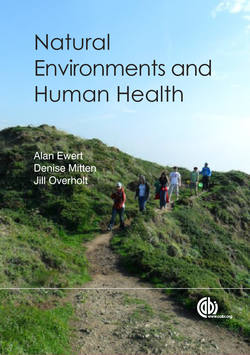Читать книгу Natural Environments and Human Health - Alan W Ewert - Страница 35
На сайте Литреса книга снята с продажи.
Trees, spirituality, mythology, and metaphor
ОглавлениеFolklore and mytho-poetic stories continue to influence moral and ethical regard for nature (Hulmes, 2009). However, as science and the church divided, nature was more or less ‘forgotten’ by the Christian church. There were attempts to incorporate some nature-related customs into this religion, such as churches in the 12th century built incorporating animals and nature symbols into their architecture (Kellert et al., 2008; Barnett, 2009; HRH The Prince of Wales, 2010) and eggs associated with the Christian festival of Easter. The use of eggs may, to some extent, be an adaptation of ancient pagan practices of such folks as Druids, related to equinox and spring rites. The egg symbolizes fertility and rebirth. In Egyptian mythology, the phoenix burns its nest to be reborn later from the egg that is left; Hindu scriptures relate that the world developed from an egg.
Altman (1994) writes about a number of groups for whom trees are prominent in their creation stories. He says that Fiji islanders believe they descended from trees and other sacred plants; ancient Greeks saw humanity coming from ash trees; Scandinavian legend has the first woman coming from an elm tree and the first man from an ash. Christmas trees may have originated with German tradition in the 16th century where evergreens were used to symbolize life and rebirth at the time of the winter solstice, although bringing trees into homes goes back to ancient Celtic times when the fir tree was revered as a sacred tree. Trees figure prominently in cultures and myths such as the Tree of Knowledge in the Garden of Eden or the Tree of Life, still popular in children’s books. Doug Hulmes (2009) has researched sacred trees in Nordic cultures, finding that the tradition of sacred trees in Scandinavia goes back to at least the pre-Christian Viking Age. Called a ‘Vårdträd’ in Swedish and a ‘Tuntre’ in Norwegian, these trees are planted in the center of a yard and, according to the knowledge passed down, provide a direct connection with nature spirits. Hulmes says, ‘The caring for the tree demonstrates respect for ancestors’ spirits that were/are believed to reside in the tree, and is a moral reminder of caring for the farm or place where one lives’ (p. 2).
One could wonder if humans continue—some in their consciousness and some in their subconscious—to value trees’ healing and spiritual qualities. Releafing of trees in the spring or after a storm can symbolize hope for people. Some psychologists use tree drawings as a diagnostic complement, finding that severely ill people often draw extreme tree depictions such as stumps or abused people draw wounds in trees reflecting their wounding (Torem et al., 1990). Writer Toni Morrison draws parallel between tree form and women claiming their power. People are familiar with the concept of a family tree. Many tree metaphors sprinkle our language including the concept grounding or rooting our memories, a tangle of roots, old trees sometimes being described as patriarchs, losing energy described as feeling sapped, a feeling of loss after a move sometimes is described as feeling uprooted, and some say the idea took root. A sense of place or attachment to a place may be described using tree examples such as having deep roots in a place or roots as deep as a tree, feeling uprooted, pining to be home, losing grounding, finding roots, and rooted to the spot. People can be described as feeling rotten inside, taking a stand, lazy as a bump on a log, tall as a tree, a hollow person, a hollow leg, branching out, and feeling fruitless. A common expression is the apple doesn’t fall far from the tree. While other nature metaphors also are common, some theorists believe this attachment to trees is due to the spiritual connection between them and humans (Perlman, 1994).
Living in an area with trees increases health according to a number of research reports. Current research in Japan is reviving a practice ‘Shinrin-yoku’ (taking in the forest atmosphere or forest bathing) with research looking at the calming and stress-reduction effect on the five senses of being in a forest atmosphere (Tsunetsugu et al., 2010). A US Forest Service study showed that the loss of 100 million trees in the eastern and midwestern US influenced death rates. Data analyzed from 1296 counties in 15 states between 1990 and 2007 found that people living in areas infested by the emerald ash borer, a beetle that kills ash trees, suffered an additional 15,000 deaths from cardiovascular disease and 6000 more deaths from lower respiratory disease when compared with uninfected areas. While no causal link was proven, this association between loss of trees and human mortality is troubling; the magnitude of the effect was greater in counties with aboveaverage median household income (Donovan et al., 2013).
